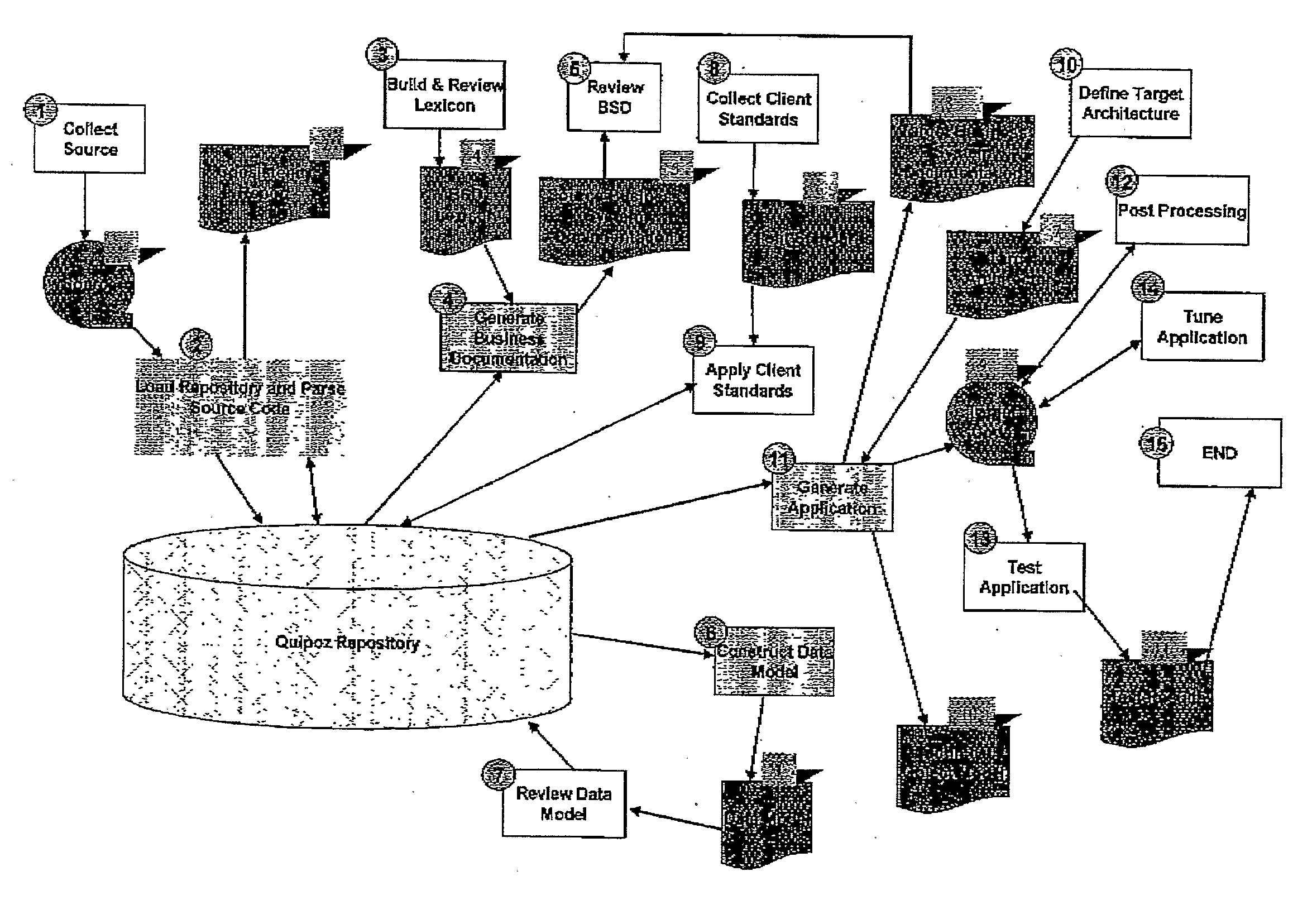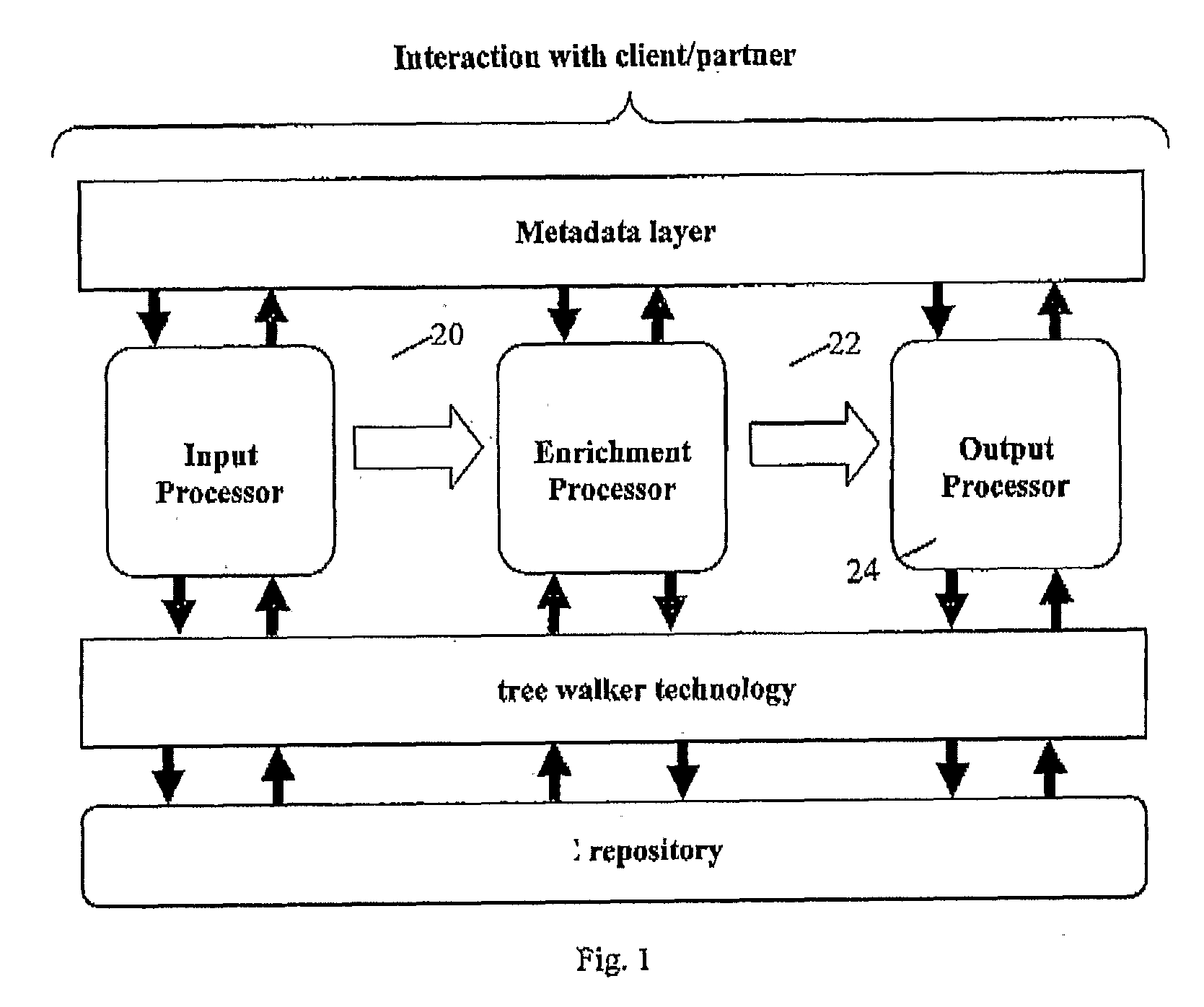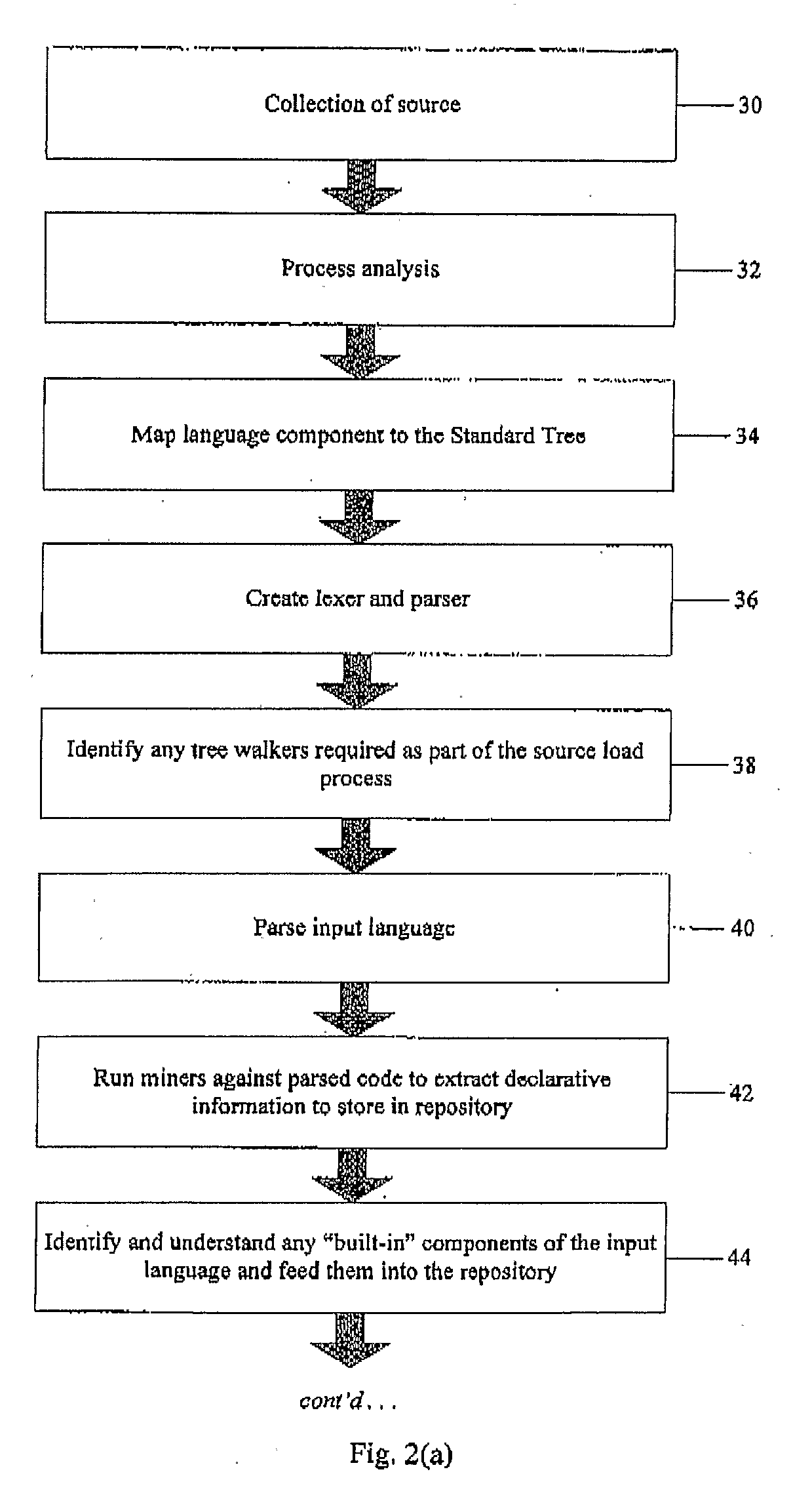Code transformation
a technology of code and transformation, applied in the direction of program control, program code transformation, instruments, etc., can solve the problem of deceptively simple automatic language conversion, and achieve the effect of improving quality and being more maintainabl
- Summary
- Abstract
- Description
- Claims
- Application Information
AI Technical Summary
Benefits of technology
Problems solved by technology
Method used
Image
Examples
Embodiment Construction
[0127]The method of one aspect of the invention comprises multiple steps that are repeated. Each iteration is aimed at producing the best quality and accurate deployed code possible. The iterations are only possible due to the automated tree restructuring and deployment. If these steps were done manually, it would be cost and time wise prohibitive to repeat steps of the transformation, even if a better method or a preferred result was identified. The iterative solution ensures that the best possible transformed code by improving it at every iteration. Further, should the requirements of the transformed code even though the deployment process has begun, then this is also possible
[0128]In reference to FIG. 1, the components of the transformation system will now be described. The Transformation Engine is compartmentalised into three sets of serial processes which are performed iteratively.
[0129]The Input Processing component 20 lexes and parses the input language into a set of tokens a...
PUM
 Login to View More
Login to View More Abstract
Description
Claims
Application Information
 Login to View More
Login to View More - R&D
- Intellectual Property
- Life Sciences
- Materials
- Tech Scout
- Unparalleled Data Quality
- Higher Quality Content
- 60% Fewer Hallucinations
Browse by: Latest US Patents, China's latest patents, Technical Efficacy Thesaurus, Application Domain, Technology Topic, Popular Technical Reports.
© 2025 PatSnap. All rights reserved.Legal|Privacy policy|Modern Slavery Act Transparency Statement|Sitemap|About US| Contact US: help@patsnap.com



